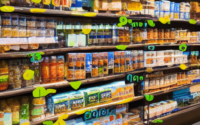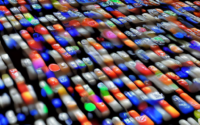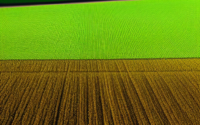Using Drones for Precision Agriculture and Farming Optimization
Using Drones for Precision Agriculture and Farming Optimization
Introduction to Precision Agriculture:
Precision agriculture is a modern farming approach that leverages technology to optimize crop yields, reduce waste, and make farming practices more efficient. By using drones equipped with various sensors and cameras, farmers can collect valuable data on their crops and fields, allowing for more precise decision-making when it comes to irrigation, fertilization, pest control, and other critical aspects of farming.
Benefits of Using Drones in Agriculture:
There are numerous benefits to using drones in agriculture, including:
1. **Increased Efficiency**: Drones can cover large areas of farmland quickly and efficiently, allowing farmers to monitor their crops in real-time and detect issues before they escalate.
2. **Cost-Effectiveness**: Using drones for crop monitoring and management can help reduce the overall operational costs by minimizing the use of resources like water and pesticides.
3. **Data-Driven Insights**: Drones capture high-resolution images and data that can provide valuable insights into crop health, soil conditions, and overall farm productivity. This data can be used to make informed decisions that optimize farming practices.
4. **Environmental Sustainability**: By using drones to target specific areas that require attention, farmers can minimize their environmental impact and reduce the overall use of chemicals on their crops.
Types of Sensors Used in Agricultural Drones:
Agricultural drones are equipped with various sensors that allow them to collect different types of data relevant to farming. Some common sensors used in agricultural drones include:
1. **RGB Cameras**: These cameras capture standard visual images that can be used for monitoring crop health, growth patterns, and detecting pests or diseases.
2. **Multispectral Cameras**: Multispectral cameras capture images across multiple wavelengths, allowing for the analysis of plant health, stress levels, and nutrient deficiencies.
3. **Thermal Cameras**: Thermal cameras detect temperature variations in crops, soil, and water bodies, helping farmers identify areas of concern such as irrigation issues or pest infestations.
4. **LiDAR Sensors**: LiDAR sensors use laser pulses to create 3D models of the terrain, which can be used for crop mapping, elevation modeling, and drainage analysis.
How to Use Drones for Precision Agriculture:
Using drones for precision agriculture involves several steps to ensure optimal data collection and analysis. Here’s a general guide on how to use drones effectively in agriculture:
1. **Flight Planning**: Before deploying a drone, farmers should plan the flight path to ensure comprehensive coverage of the farmland. Factors such as altitude, speed, and flight pattern should be considered to capture high-quality data.
2. **Data Collection**: Once in the air, drones collect various data through their sensors. Farmers should ensure that the drone captures images and other information systematically to minimize gaps in the data.
3. **Data Analysis**: After the flight, the collected data needs to be analyzed to extract actionable insights. This analysis may include identifying crop health issues, mapping irrigation needs, or assessing soil conditions.
4. **Integration with Farm Management Software**: The data collected by drones can be integrated with farm management software to streamline decision-making processes. By combining drone data with other farm data sets, farmers can create comprehensive plans for optimizing their agricultural practices.
Challenges of Using Drones in Agriculture:
While drones offer significant advantages in precision agriculture, there are also challenges that farmers may encounter when integrating drone technology into their farming operations. Some common challenges include:
1. **Regulatory Compliance**: Drone operations are subject to regulations and restrictions set by aviation authorities. Farmers need to be aware of and comply with these regulations to avoid legal issues.
2. **Data Interpretation**: Analyzing the data collected by drones requires expertise and resources. Farmers may need to invest in training or hire professionals to interpret the data effectively.
3. **Weather Conditions**: Adverse weather conditions such as high winds, rain, or fog can impact drone flights and data collection. Farmers should consider weather patterns when planning drone missions.
4. **Initial Investment**: Acquiring drones and the necessary equipment can involve a significant initial investment. Farmers need to assess the cost-benefit ratio before implementing drone technology on their farms.
Future Trends in Agricultural Drone Technology:
As technology continues to advance, the future of agricultural drone technology holds exciting possibilities for the farming industry. Some future trends to watch out for include:
1. **Autonomous Drones**: The development of autonomous drones equipped with artificial intelligence (AI) algorithms will enable drones to make real-time decisions based on the data they collect, enhancing efficiency and productivity in farming operations.
2. **Hyper-Spectral Imaging**: Hyper-spectral imaging technology will provide even more detailed information on crop health, allowing farmers to detect subtle changes in plant physiology and nutrient levels.
3. **Drone Swarms**: Coordinated fleets of drones, or drone swarms, will work together to cover large areas of farmland simultaneously, maximizing efficiency and data collection capabilities.
4. **Blockchain Integration**: Integrating blockchain technology with drone data will enhance data security and transparency in agricultural data management, benefiting farmers, stakeholders, and consumers alike.



